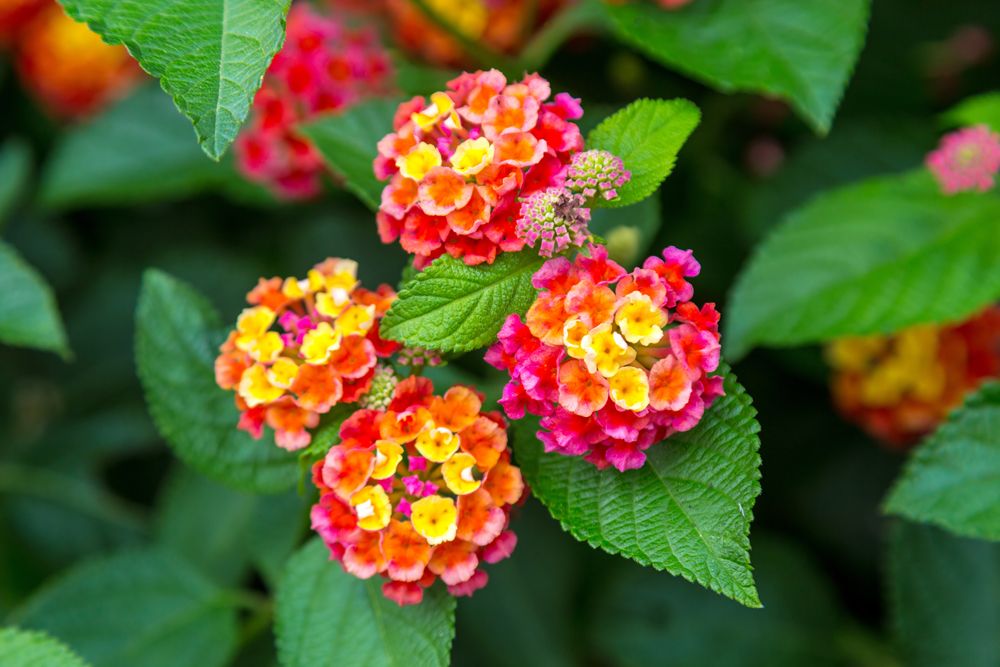Lantana camara
Common Name:
Lantana

General Information:
Lantana is an evergreen shrub with rough textured bark, rough, pointed, toothed and scented leaves which grows wild throughout Florida. It has small pink and yellow cluster flowers in the summer. Native to SE USA. Grows as wild, erect shrub in a rambling, spreading habit. Well developed trunked specimens may be collected. It is native to Tropical America. Its leaves are simple, opposite, oblong-obate, to 5 inches long, puckered, interveninal regions, rough, rugose surface, aromatic when crushed, margins bluntly toothed. Stems are hairy and prickly.
Available commercially in nurseries but found extensively in the wild. Because lantana grows as a weed in Florida collected specimens are a prime source for bonsai. They can be collected in the spring or right on through summer. Such specimens usually have poor root systems but given reasonable care, recover well. They can often be found with old, thick, gnarled trunks. Lantana may also be propagated from seed of the fruit and by cuttings and air layering. Flowers are orange, yellow, red, pink, 4-5 united, lobed petals to 1/4 inch across, in terminal or axillary heads to 2 inches across. Flowers in summer and fall. Fruit is drupe-like berry, clustered, fleshy, black to 1/2 inch in diameter, toxic, irritant sap. Highly salt tolerant.
Family:
Verbenaceae.
Lighting:
Require full sun. Once the desired style is attained, leaves may be dwarfed by stripping all the leaves off and later removing any which grow to be too large.
Temperature:
Zone 9b. Lantana is a tropical plant which should be protected from cold weather.
Watering:
Can go dry between waterings.
Feeding:
Lantana is a heavy feeder and likes frequent fertilizing with a general purpose fertilizer.
Pruning and wiring:
Lantana may be styled in any bonsai manner, but usually looks best as a semi-cascade or informal upright. It can be cut back drastically. Older branches become brittle and extreme care must be given to wiring and bending.
Propagation:
Cuttings, layering, seeds.
Repotting:
Once established the bonsai should be repotted every one to three years.
Pests and diseases:
Chewing insects.
Compiled by Thomas L. Zane
